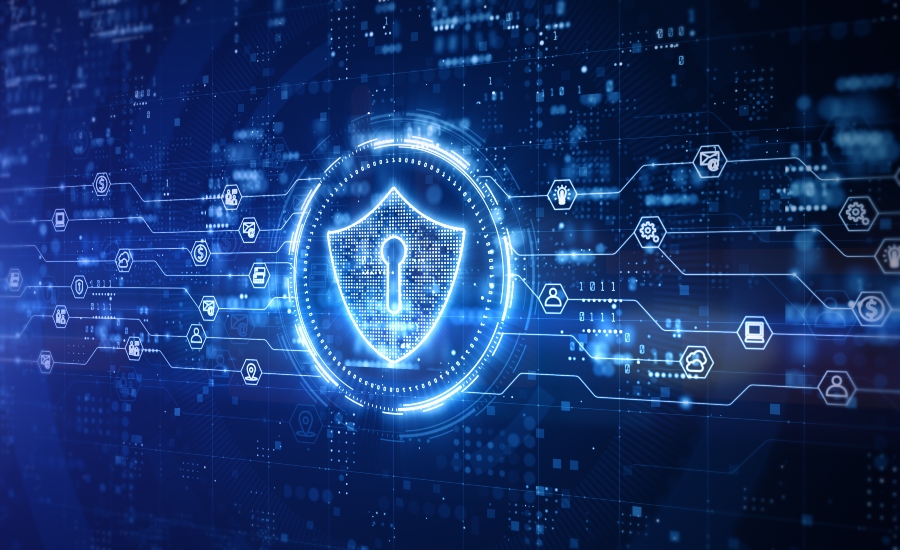
What is Cybersecurity ?
Cyber security refers to every aspect of protecting an organization and its employees and assets against cyber threats. As cyberattacks become more common and sophisticated and corporate networks grow more complex, a variety of cyber security solutions are required to mitigate corporate cyber risk.
The Different Types of Cybersecurity
- Network Security : Most attacks occur over the network, and network security solutions are designed to identify and block these attacks. These solutions include data and access controls such as Data Loss Prevention (DLP), IAM (Identity Access Management), NAC (Network Access Control), and NGFW (Next-Generation Firewall) application controls to enforce safe web use policies. Advanced and multi-layered network threat prevention technologies include IPS (Intrusion Prevention System), NGAV (Next-Gen Antivirus), Sandboxing, and CDR (Content Disarm and Reconstruction). Also important are network analytics, threat hunting, and automated SOAR (Security Orchestration and Response) technologies.
- Cloud Security : As organizations increasingly adopt cloud computing, securing the cloud becomes a major priority. A cloud security strategy includes cyber security solutions, controls, policies, and services that help to protect an organization’s entire cloud deployment (applications, data, infrastructure, etc.) against attack. While many cloud providers offer security solutions, these are often inadequate to the task of achieving enterprise-grade security in the cloud. Supplementary third-party solutions are necessary to protect against data breaches and targeted attacks in cloud environments.
- Endpoint Security :The zero-trust security model prescribes creating micro-segments around data wherever it may be. One way to do that with a mobile workforce is using endpoint security. With endpoint security, companies can secure end-user devices such as desktops and laptops with data and network security controls, advanced threat prevention such as anti-phishing and anti-ransomware, and technologies that provide forensics such as endpoint detection and response (EDR) solutions.
- Mobile Security : Often overlooked, mobile devices such as tablets and smartphones have access to corporate data, exposing businesses to threats from malicious apps, zero-day, phishing, and IM (Instant Messaging) attacks. Mobile security prevents these attacks and secures the operating systems and devices from rooting and jailbreaking. When included with an MDM (Mobile Device Management) solution, this enables enterprises to ensure only compliant mobile devices have access to corporate assets.
- IoT Security : While using Internet of Things (IoT) devices certainly delivers productivity benefits, it also exposes organizations to new cyber threats. Threat actors seek out vulnerable devices inadvertently connected to the Internet for nefarious uses such as a pathway into a corporate network or for another bot in a global bot network. IoT security protects these devices with discovery and classification of the connected devices, auto-segmentation to control network activities, and using IPS as a virtual patch to prevent exploits against vulnerable IoT devices. In some cases, the firmware of the device can also be augmented with small agents to prevent exploits and runtime attacks.
- application Security : Web applications, like anything else directly connected to the Internet, are targets for threat actors. Since 2007, OWASP has tracked the top 10 threats to critical web application security flaws such as injection, broken authentication, misconfiguration, and cross-site scripting to name a few. With application security, the OWASP Top 10 attacks can be stopped. Application security also prevents bot attacks and stops any malicious interaction with applications and APIs. With continuous learning, apps will remain protected even as DevOps releases new content.
- Zero Trust : The traditional security model is perimeter-focused, building walls around an organization’s valuable assets like a castle. However, this approach has several issues, such as the potential for insider threats and the rapid dissolution of the network perimeter. As corporate assets move off-premises as part of cloud adoption and remote work, a new approach to security is needed. Zero trust takes a more granular approach to security, protecting individual resources through a combination of micro-segmentation, monitoring, and enforcement of role-based access controls.
- Sophisticated Attacks: Modern cyberattacks can no longer be detected with legacy approaches to cyber security. More in-depth visibility and investigation is necessary to identify campaigns by advanced persistent threats (APTs) and other sophisticated cyber threat actors.
- Complex Environments: The modern corporate network sprawls over on-prem infrastructure and multiple cloud environments. This makes consistent security monitoring and policy enforcement across an organization’s entire IT infrastructure much more difficult.
- Heterogeneous Endpoints: IT is no longer limited to traditional desktop and laptop computers. Technological evolution and bring your own device (BYOD) policies make it necessary to secure a range of devices, some of which the company does not even own.
- Rise of Remote Work: The response to the COVID-19 pandemic demonstrated that remote and hybrid work models were viable for many companies. Now, organizations need solutions that allow them to effectively protect the remote workforce as well as on-site employees.
- Network Security: Check Point Quantum
- IoT Security: Check Point Quantum IoT Protect
- Cloud Security: Check Point CloudGuard
- Application Security: Check Point CloudGuard AppSec
- Endpoint Security: Check Point Harmony Endpoint
- Mobile Security: Check Point Harmony Mobile
The Need for a Consolidated Cyber Security Architecture
In the past, organizations could get by with an array of standalone security solutions designed to address specific threats and use cases. Malware attacks were less common and less sophisticated, and corporate infrastructures were less complex. Today, cyber security teams are often overwhelmed while trying to manage these complex cyber security architectures. This is caused by a number of factors, including:
Achieving Comprehensive Cybersecurity with Check Point
A modern cybersecurity infrastructure is one that is consolidated and built from solutions that are designed to work together. This requires partnering with a security provider with experience in protecting all of an organization’s assets against a range of cyber threats. Check Point offers solutions for all of an organization’s security needs, including: